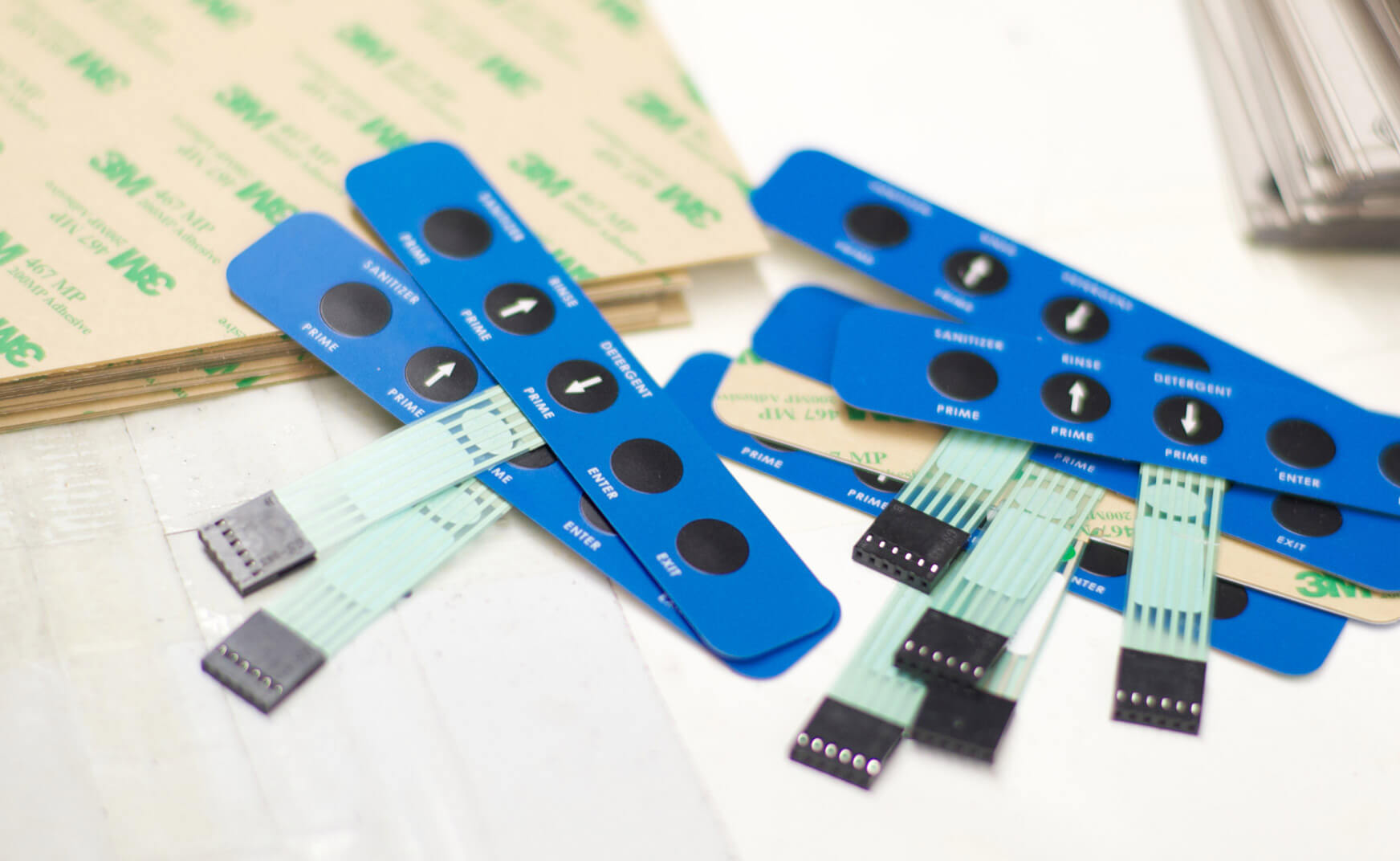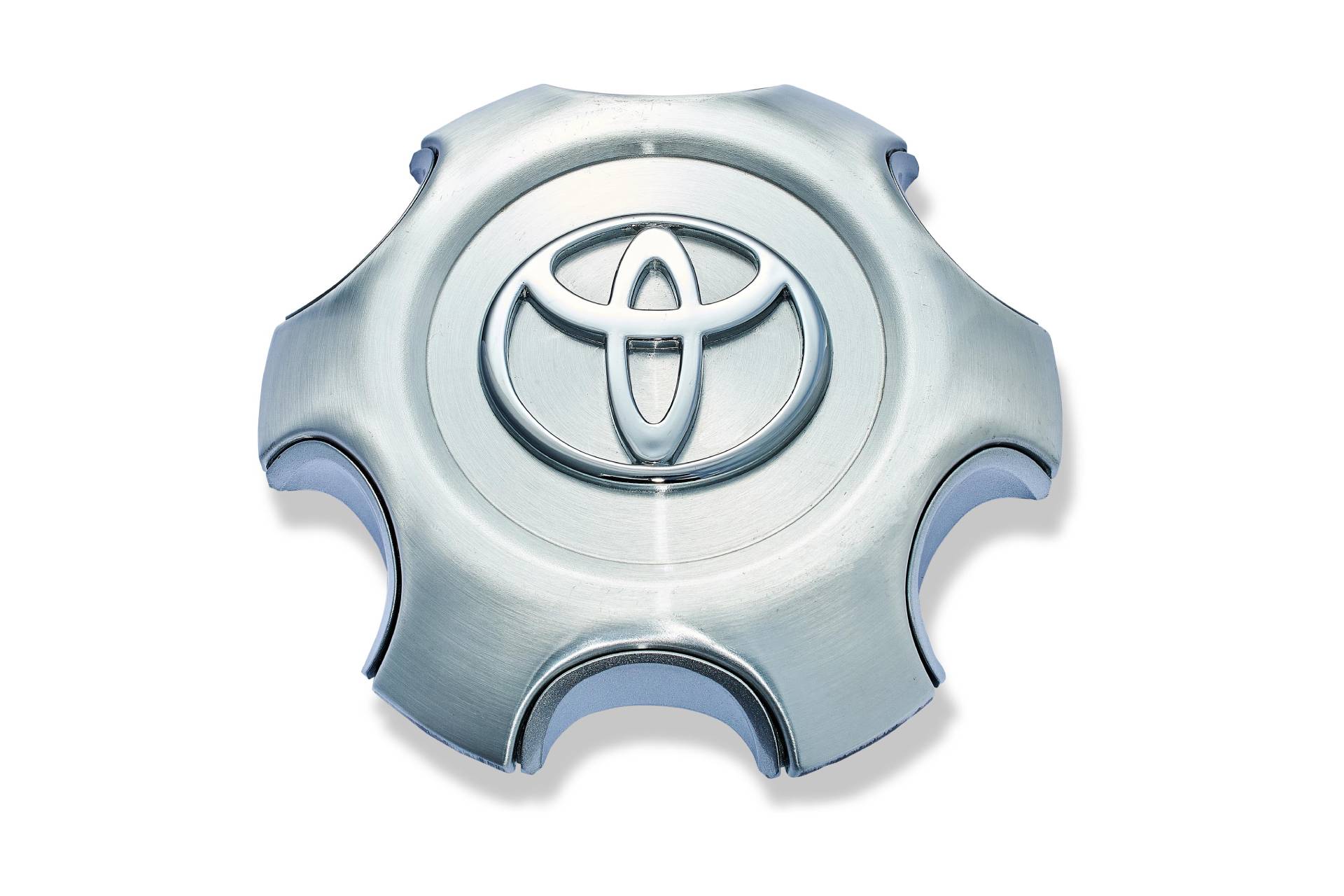Checking Out the Manufacturing Process of Membrane Switch for Various Industries
The production procedure of Membrane buttons is an intricate venture that requires accuracy and interest to information. From choosing proper materials to executing rigorous high quality control procedures, each action plays an important function in guaranteeing functionality. Different industries, consisting of medical and automobile, rely on these parts for their unique applications. Recognizing the intricacies of this process exposes significant understandings into exactly how these buttons are created and their impact across varied sectors.
Recognizing Membrane Switches Over: An Introduction

Key Materials Used in Membrane Switch Production
In Membrane switch production, the option of key materials considerably affects capability and resilience. Conductive materials, adhesives, and finishes play important duties, while substrate choice impacts general efficiency and dependability. Understanding these parts is essential for optimizing the style and manufacturing of Membrane switches.
Conductive Products Introduction
Conductive materials play an essential role in the capability of Membrane switches, making certain trusted electric connections within the gadget. Frequently used products consist of silver, copper, and carbon-based inks, each offering unique benefits. Silver is favored for its high conductivity and sturdiness, making it perfect for applications needing robust efficiency. Copper, while a little less conductive than silver, is a cost-efficient option commonly used in printed circuits. Carbon-based inks offer a functional choice, appropriate for applications where flexibility and lower prices are focused on, although they have reduced conductivity contrasted to metal alternatives. The choice of conductive products directly impacts the general dependability, life-span, and performance of the Membrane button, making it a crucial consideration in the manufacturing process.
Adhesives and Coatings
Coatings and adhesives are important components in the production of Membrane buttons, supplying crucial bonding and protective buildings. These products guarantee that numerous layers of the button, including graphic overlays and circuitry, stick securely to one another, enhancing resilience and functionality. Frequently made use of adhesives include pressure-sensitive adhesives (PSAs) and epoxy-based solutions, which provide strong adhesion and resilience. Coatings, such as polyurethane or acrylic, serve to safeguard versus environmental factors, consisting of wetness, abrasion, and chemicals. Additionally, finishings can boost responsive feedback and aesthetic charm, adding to the general user experience. The selection of ideal adhesives and coatings is essential for maximizing performance and long life in varied applications throughout various sectors, making sure that Membrane switches over fulfill particular functional demands.
Substrate Selection Elements
Substrate choice plays an important function in the manufacturing of Membrane switches, as it significantly affects their general efficiency and sturdiness. Secret products such as polyester, polycarbonate, and flexible printed motherboard (FPCBs) are commonly used for their distinctive residential or commercial properties. Polyester is favored for its cost-effectiveness and resistance to abrasion, making it ideal for applications with high wear. Polycarbonate offers superior clearness and effect resistance, suitable for environments needing high presence. FPCBs provide enhanced flexibility and are often made use of in intricate layouts. The selection of substratum also affects aspects like thermal security, chemical resistance, and ease of printing. Eventually, picking the proper substrate is crucial for making certain the capability and longevity of Membrane switches over throughout different industries.
The Layout Process of Membrane Switches
The layout process of Membrane buttons is a critical stage that significantly affects the capability and aesthetic appeals of the final item - membrane switch manufacturer. It begins with defining the particular demands of the application, including measurements, switch layout, and tactile feedback preferences. Developers must think about customer interaction, making certain that the switch is user-friendly and accessible.Next, materials are chosen based upon sturdiness, adaptability, and ecological resistance. The integration of graphics and branding aspects is likewise necessary, as it boosts aesthetic charm and interaction. Prototyping enables iterative screening, making it possible for changes based on individual responses and efficiency evaluations.Additionally, the layout needs to account for the electric elements, such as ports and circuits, making sure reliability and ease of use. Eventually, a successful style integrates functionality, visual appeals, and individual experience, paving the method for efficient manufacturing and long-lasting efficiency in different industries
Printing Methods for Membrane Switches
The printing techniques made use of in Membrane switch manufacturing play a crucial duty in figuring out the end product's quality and performance. Screen printing supplies benefits such as resilience and lively shade application, while digital printing advancements supply versatility and precision in style. Comprehending these methods can considerably affect the total efficiency of Membrane buttons in numerous applications.
Display Printing Benefits
Numerous advantages make display publishing a preferred method for creating Membrane switches. This technique permits high-grade, vivid colors and comprehensive layouts, which are essential for interface applications. Display printing is particularly efficient for applying thick ink layers, improving durability and tactile comments. Furthermore, it uses outstanding bond to numerous substrates, making sure durability popular settings. The procedure is economical for big production runs, as it decreases configuration time and waste. In addition, screen printing supports a variety of inks, consisting of specialty and UV-curable choices, making it possible for versatility in layout. Its capacity to produce constant results across several systems makes it a trusted selection for producers intending why not try these out for top quality and performance in Membrane button production.
Digital Printing Innovations

Innovations in digital printing innovation are transforming the production of Membrane buttons, providing makers ingenious remedies that boost design adaptability and performance. Digital printing enables intricate styles and high-resolution graphics, enabling custom-made branding and functionality without the constraints of typical approaches. This strategy minimizes arrangement times and prices, assisting in shorter manufacturing runs and marginal waste, making it excellent for organizations with differing needs. In addition, innovations in ink solutions provide better durability and bond, ensuring durability in various atmospheres. As sectors increasingly look for complicated and tailored designs, electronic printing sticks out as an essential strategy, setting a brand-new standard in Membrane button manufacturing. The combination of these developments settings producers to fulfill progressing market requires successfully.
Setting up and Layering of Membrane Switch Components
Cautious assembly and layering of Membrane button parts are necessary to assuring functionality and durability. This procedure starts with the specific alignment of numerous layers, consisting of the graphic overlay, adhesive, circuit layer, and support material. Each element should be thoroughly placed to maintain electrical honesty and interface responsiveness.During assembly, conductive traces are put on the circuit layer, commonly made from materials like polyester or polycarbonate. This layer is crucial, as it beams when stress is used. The adhesive made use of for bonding these layers is likewise selected for its ability to withstand environmental stresses while keeping a secure bond.Heat and stress are typically applied throughout the assembly process to determine that the layers adhere appropriately without endangering the functionality of the button. Attention is given to the side securing to shield against wetness and impurities, securing the durability of the Membrane switch in various industrial applications.
Quality Assurance Steps in Membrane Switch Manufacturing
Quality assurance measures play a necessary role in making certain the reliability and efficiency of Membrane changes following the assembly and layering of their parts. In the production procedure, a number of crucial examinations are carried out to maintain high quality criteria. These consist of visual evaluations for problems in printing and sticky application, as well as functional tests to validate the responsiveness of each switch.Additionally, environmental testing is executed to examine the buttons' longevity against temperature fluctuations and moisture exposure. Makers typically execute analytical process control (copyright) methods to monitor manufacturing uniformity, enabling very early detection of anomalies.Furthermore, traceability systems are established to track elements and materials, making sure liability and promoting recalls if required. Calibration of equipment and adherence to market requirements are additionally vital to keeping item stability. Collectively, these quality assurance procedures guard the performance of Membrane switches throughout different applications, ultimately enhancing client fulfillment.
Applications of Membrane Changes Across Different Industries
Membrane switches are used across a diverse range of markets, showcasing their convenience and flexibility. In the clinical industry, they give water-proof and dependable user interfaces for gadgets such as analysis tools and infusion pumps, ensuring hygiene and convenience of use. The vehicle industry employs Membrane switches for control panel controls, allowing smooth communication between the chauffeur and lorry systems.In customer electronics, these buttons are found in devices and portable devices, supplying a sleek, contemporary aesthetic while improving functionality. Industrial applications also take advantage of Membrane changes for equipment control panels, where resilience and resistance to severe problems are essential.Furthermore, the aerospace and defense sectors utilize Membrane switches for cabin instrumentation and interaction systems, prioritizing integrity and performance under severe conditions. On the whole, Membrane buttons play a vital duty in improving the user experience and operational effectiveness across numerous domain names.
Regularly Asked Concerns
For how long Does It Require To Manufacture a Membrane Switch?
The manufacturing time for a membrane button commonly ranges from a couple of days to numerous weeks - membrane switch manufacturer. Variables influencing this duration include design my explanation complexity, product availability, and production quantity, all influencing the overall timeline considerably
What Is the Normal Lifespan of a Membrane Layer Switch?
The regular lifespan of a membrane button normally varies from 1 to 5 million actuations, relying on variables such as material high quality, environmental problems, and usage regularity, greatly impacting sturdiness and overall performance.
Can Membrane Switches Be Custom-made for Details Applications?
Membrane switches can without a doubt be tailored for details applications. Their design adaptability permits modifications in size, shape, shades, and graphics, guaranteeing compatibility with distinct needs across different industries and enhancing performance and individual experience.

Are Membrane Changes Ecologically Friendly?
The ecological influence of Membrane changes varies. Some products used might not be eco-friendly, while developments in producing processes are increasingly concentrating on sustainability, intending to lower waste and promote recyclable parts in their production.
What Are the Usual Failing Settings of Membrane Switches?
Typical failure modes of Membrane switches include delamination, sticky failing, wear and tear from usage, wetness access, and electric failures. These problems can substantially influence capability, efficiency, and life-span in different applications across different industries. Membrane switches can be personalized to fit certain design needs, such as form, dimension, and capability, making them highly adaptable.The building and construction normally entails numerous layers, consisting of a visuals overlay, adhesive, and a circuit layer, which function with each other to create a smooth individual experience. In Membrane switch manufacturing, the selection of crucial materials considerably affects functionality and durability. The automobile sector employs Membrane switches for dashboard controls, enabling smooth interaction in between the driver and car systems.In consumer electronics, these buttons are found in home appliances and portable gadgets, supplying a smooth, contemporary aesthetic while boosting functionality. Industrial applications also utilize Membrane switches over for machinery control panels, where longevity and resistance to severe conditions are essential.Furthermore, the aerospace and defense sectors use Membrane buttons for cockpit instrumentation and communication systems, click now focusing on reliability and performance under severe conditions. Membrane buttons can undoubtedly be tailored for details applications.